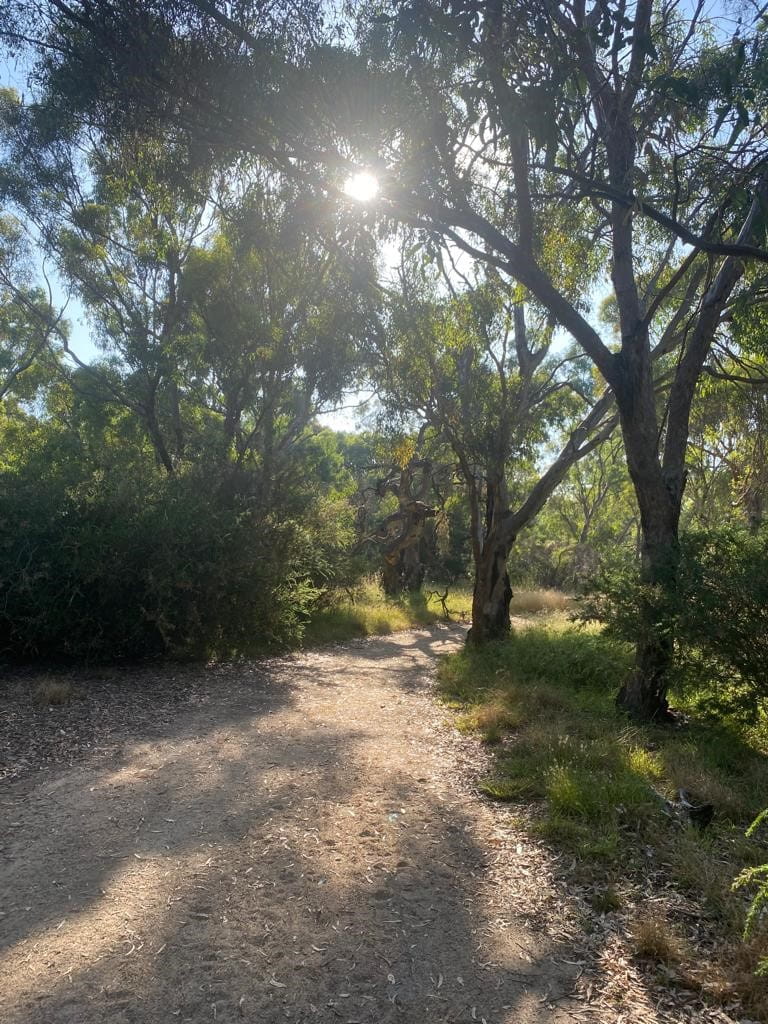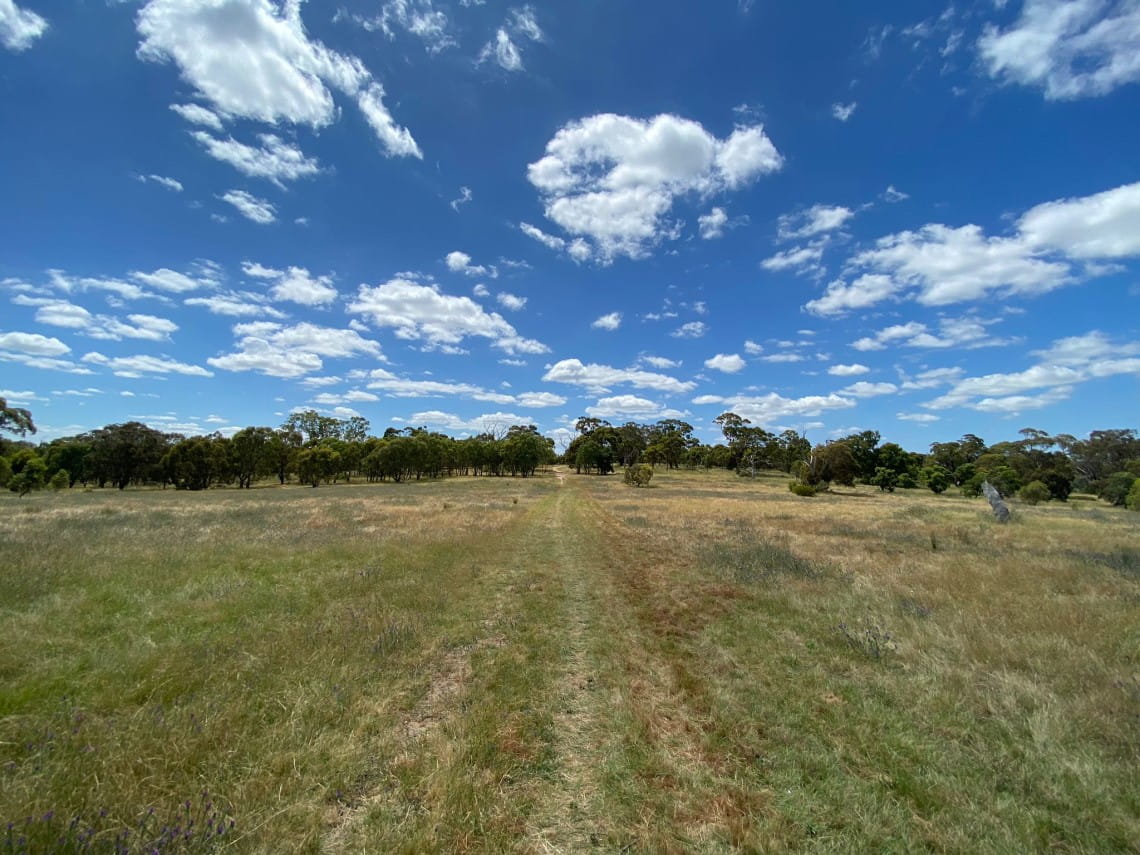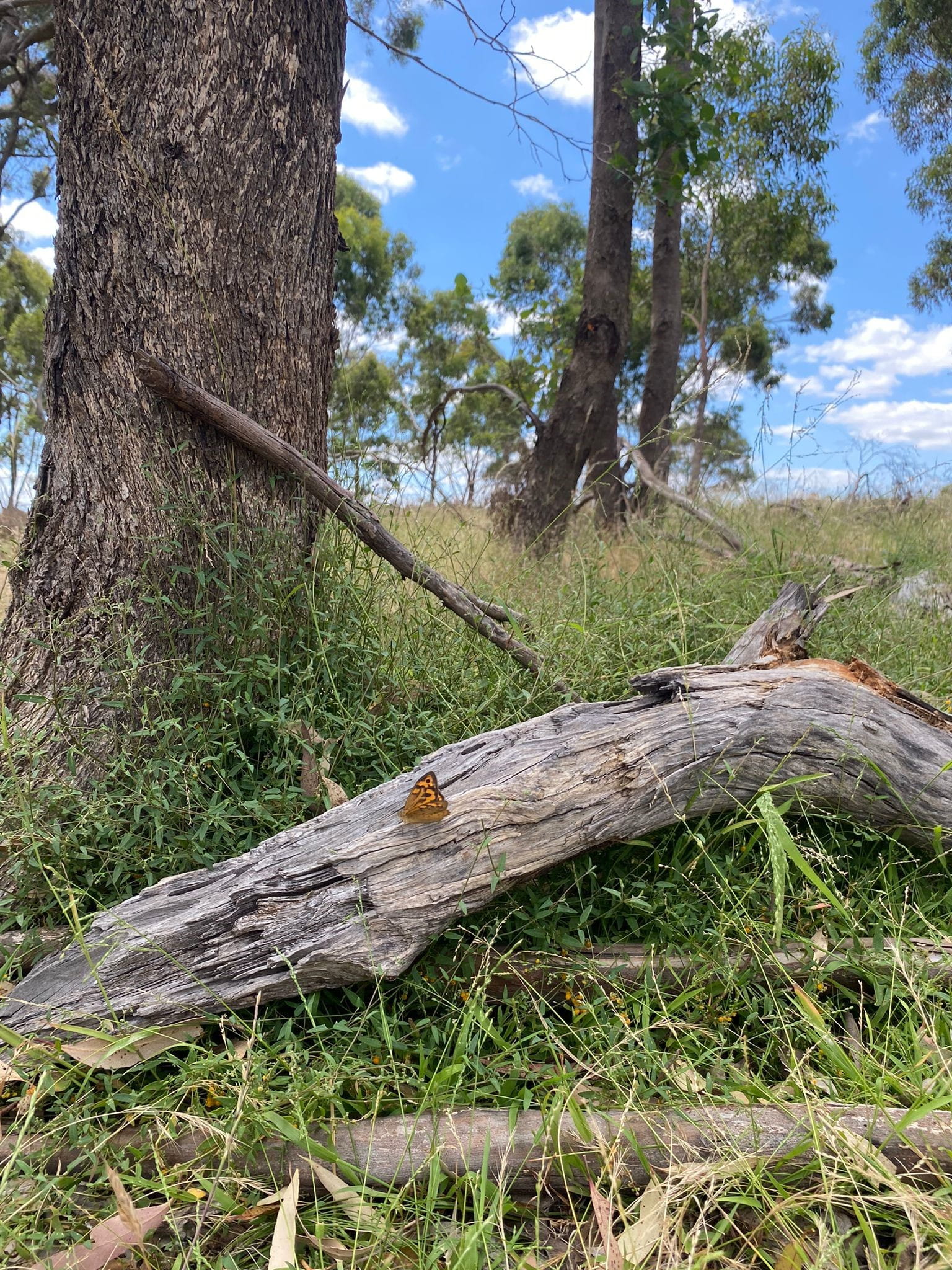Located in Melbourne's north, Woodlands Historic Park is a great place to unwind and get into nature.
Woodlands Historic Park is part of an Aboriginal cultural landscape in the traditional Country of the Wurundjeri Peoples.
Despite being relatively close to the northern suburbs and Melbourne International Airport, the bushy landscape with wide open grasslands makes it feel like you've stepped back in time.
When visiting any new place it's important to stop and think about the history of the land. Find out who the Traditional Owners of the Country you're visiting and read a bit about them before you visit.
At Woodlands, you can educate yourself while you walk along the Murrup Gurrong Yan (Spiritual Creek Walk).

On the Murrup Gurrong Yan trail. Credit: Parks Victoria
Murrup Gurrong Yan
Enter the park from Somerton Road and park in the Somerton Rd Picnic Area. There are tables, shelters and toilets making it a great spot to picnic with the family. If you go early on a Saturday morning you may feel like you have the park to yourself.
A small information shelter has a map with information about all the walks in the park, and a little bridge across the Moonee Ponds Creek takes you to an intersection where several walks begin.
The Murrup Gurrong Yan starts down the track to the right.
If you're visiting in summer, you'll hear a chorus of crickets and clicking grasshoppers as you wind along the path. Butterflies lazily flit in front of you and ravens caw nearby. Occasionally, a big plan will fly overhead – the only reminder that you're relatively close to civilisation.
It's easy to imagine a time before the arrival of Europeans.
Here is the information from one of the interpretive signs along the walk that provides some great food for thought:
'Whilst dramatic changes to this landscape since European settlement have destroyed much evidence of the Wurundjeri Kurung-William Balluk people's past lifestyle, some indications remain.
Several trees to the vicinty bear scars where men removed slabs of bark to make canoes, containers, shields or shelter.
Other isolated artefacts, campsite remnants and scattered artefacts are archeological evidence that help build a picture of how the Wurundjeri people lived here.
There are signs of important ceremonial sites in this area. Perhaps this was a special place where different groups came together to exchange resources, choose wives, settle disputes or share dances and songs about the Dreamtime. Perhaps youths were brought here for the secret initiation rites we know so little about.
We do know that many different family groups made camps here as they knowingly pursued the seasonally changing food resources of their large estates.'
There are several interpretive signs along the walk, and some seating for quiet contemplation.

The open grassy plains of Woodlands Historic Park. Credit: Parks Victoria
Wildlife
There is an abundance of wildlife in this park – kangaroos, lizards, birds and bugs. Visit early in the morning or close to sunset for the best chance of encountering kangaroos.
Walk slowly and quietly and you might see fairy wrens, silver eyes and robins flitting around the shrubbery.
Bring your binoculars and peer up at the gum trees to see magpies, ravens, cockatoos, kites and falcons.
Plan your visit to Woodlands Historic Park by checking the park page, www.parks.vic.gov.au/places-to-see/parks/woodlands-historic-park.

Butterflies nestle among the stumps and trees of the Woodlands Historic Park. Credit: Parks Victoria.






